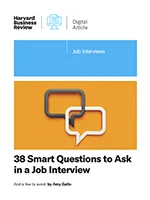
Digital has completely changed the way companies create and capture value. But many organizations get lost in the idea of digital transformation and forget to focus on how they will continue to create and capture value with digital.
Companies must first understand different types of value – value from customers (cross-selling, increased loyalty, great customer experience); value from operations (increased efficiency, modularity and reuse of components, automating processes); and value from ecosystems (leveraging partners for both access to more customers and range of products and services).
With these digital goals in mind, these authors share how organizations can take action to create value in five different ways. Download this report to learn how to become a truly future-ready organization.
Download: Is your company seizing its digital value?
How to recover from work stress, according to science

We’ve seen massive improvements in employee benefits concerning mental health support to combat burnout – from mental health PTO to an emphasis on meeting-free days to autonomy and flexible scheduling, companies recognize the benefits of focusing on employee well-being.
However, these efforts are all for naught if employees don’t recover from stress and potential burnout. The authors of this HBR report discuss the “recovery paradox” – that when our bodies and minds need to recover and reset the most, we’re the least likely to be able to do something about it. Download this report to consider five research-backed strategies for recovering from work stress.
Download: How to recover from work stress, according to science
From prediction to transformation

AI provides valuable insights, but the real value is its ability to improve the quality of decisions. And there are so many options for businesses to take advantage of this. However, when you consider the snowball effect of deciding on one area of an organization and how it impacts other areas of the business, introducing AI could lead to a full reshaping of systems. Similar to disruptive tech from the past, e.g., electricity, industries have the potential to transform.
Decisions involve a combination of prediction and judgment. Because AI makes highly accurate predictions, it will shift decision rights to where judgment is still needed, potentially changing who makes decisions and where, when, and how. More-accurate predictions in one part of a value chain will also have ripple effects on other parts. Read this article for tips for effective communication to synchronize efforts and prevent changes in one area from disrupting others.
Download: From prediction to transformation
Make the most of your one-on-one meetings

Unbelievably, many organizations don’t offer strategic guidance or extensive training for people managers. In this HBR article about 1:1 meetings, the author’s research demonstrates that managers that don’t meet with direct reports consistently or manage poorly risk leaving team members feeling disconnected. A meeting done right builds trust and psychological safety, motivating employees to bring efficiency to the team.
While there’s no one way to execute successful meetings, one surefire way to create a feeling of accomplishment is to focus on topics of importance to your employees rather than what’s top of mind for the manager. Focus on timely meetings that emphasize genuine conversation, open the floor to questions, and offer support. Download this report to learn what team members need from their managers and discover what motivates short- and long-term performance.


